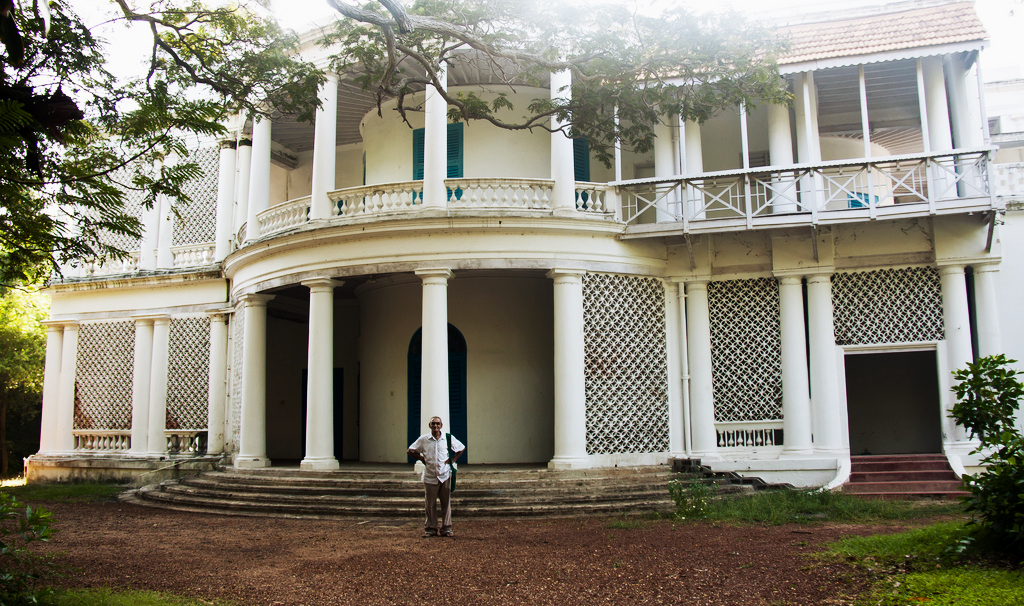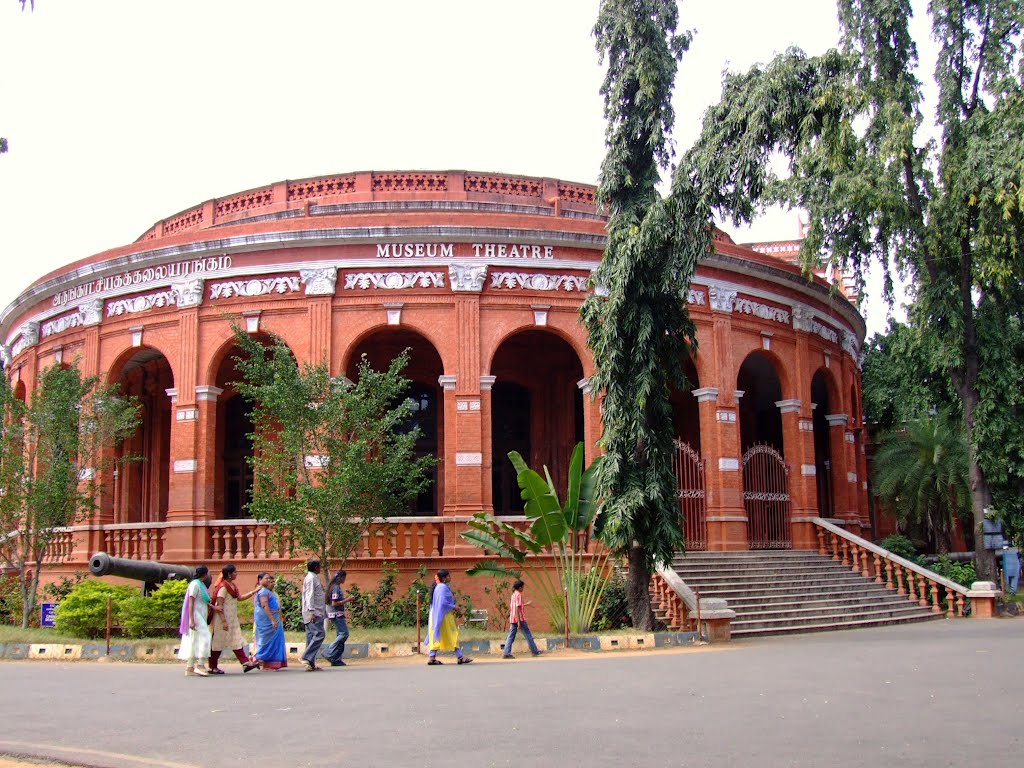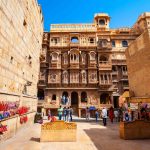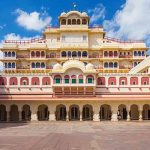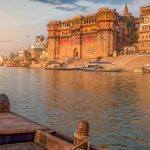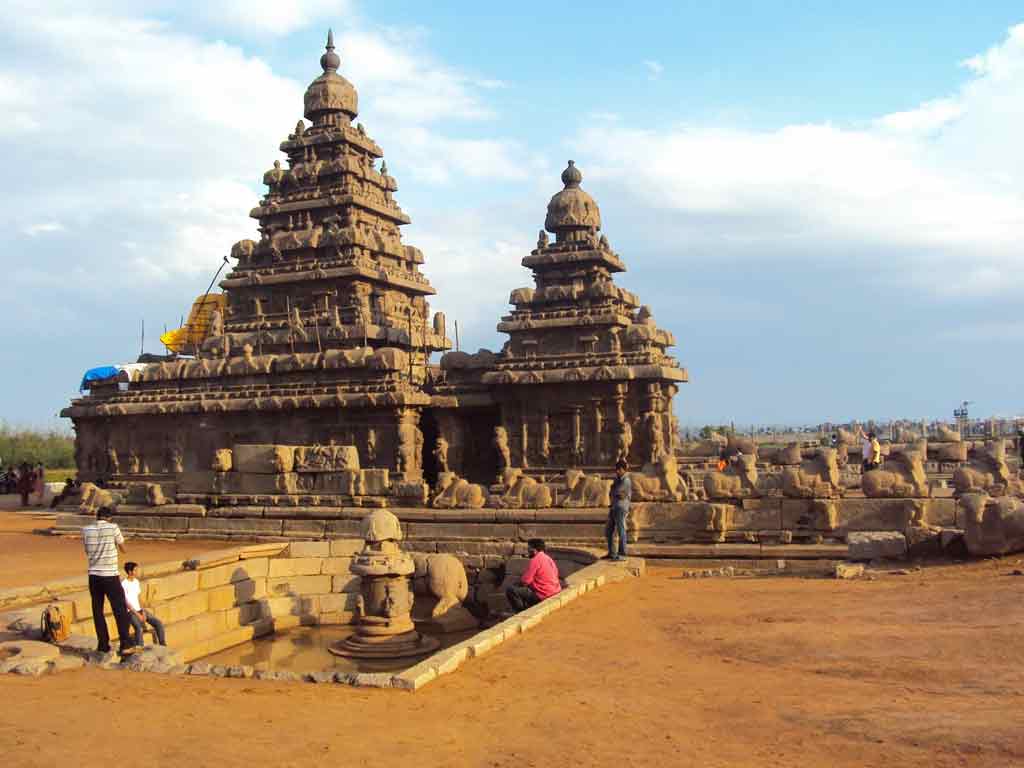
Mahabalipuram Temples
The history of Mahabalipuram dates back to two thousand years, it contains nearly forty monuments of different types including an “open air bas relief” which is the largest in the world, for centuries it has been a centre of pilgrimage, it figures in the early annals of the British search for the picturesque in India in the 18th century, today it attracts shoals of foreigners in search of relaxation and sea bathing, and most strange of all, it has an atomic power plant for neighbour. A small library has been written on it. Over its history and that of its monuments a number of scholarly controversies rage.
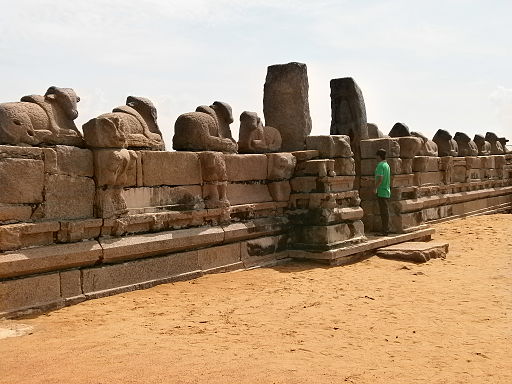
Mahabalipuram was already a centre of pilgrimage when, in the 7th century Mamalla made it a seaport and began to make temples fashioned of rock. It was through Mahabalipuram that many Indian colonists, who included sages and artists, migrated to Southeast Asia. Sri Lanka’s national chronicle, the “Mahavamsa” testifies to this fact.
How to Get There
Air: Chennai (58-km) is the nearest airport with both domestic and international terminus. Chennai is connected with all the major places in India through the numerous domestic flights. International flights operate from various parts of the world to Chennai.
Rail: The nearest railway stations are Chengalpattu (29-km) and Chennai (58-km). From these stations one has to take road to reach the Mahabalipuram.
Road: Buses are available from Pondicherry, Kanchipuram, Chengalpattu and Chennai to Mahabalipuram daily. The road to Mahabalipuram is good. Tourists can also hire a taxi from Chennai.
Temple Town Of Tamil Nadu
Located at a distance of 58-km from Chennai, Mahabalipuram has everything that makes a site memorable; tradition, history, piety, western annals, and current importance as a centre of tourism.
Name of The Site: The proper name of the site is “Mamallapuram”, after Mamalla, an honorific of the Pallava king, Narasimha Varman I (630-668), who created the earliest of its monuments. But it is popularly called “Mahabalipuram”, or “The city of Bali”, whom Lord Vishnu chastised for his pride and of whom there is a relief in one of the excavated temples here.
Temples In Mahabalipuram: There are, or rather were, two low hills in Mahabalipuram, about 400m from the sea. In the larger one, on both sides, there are eleven excavated temples, called Mandapas, two “open air bas reliefs”, one of which is unfinished, and a third enclosed one. Out of a big rock standing free nearby there is a “cut out” temple, called a “Ratha”. This type is unique to Mahabalipuram.
Out of the other hill, much smaller and standing about 200m to the south, are fashioned five more rathas, and three big sculptures of a Nandi, a Loin and an Elephant. On the top of the bigger hill there is a structural temple, and a little distance the magnificent beginnings of a Vijayanagar Gopura and also survivals of what is believed to be a palace.
The Shore Temple
The Shore Temple occupies a most extraordinary site, by the very margin of the Bay of Bengal so that at high tide the waves sweep into it and the walls, with their sculptures, have been eroded by the winds and waves of thirteen centuries. The European name for Mahabalipuram, since the first western visitor wrote of it in the 16th century, is the “Seven Pagodas”.
There are not seven temples here. The number has been made up fancifully and even whimsically. Some of the Europeans believed that the sea has overwhelmed a part of the town containing some temples. But, there is no sunken city in the waves off Mahabalipuram. The European name, “Seven Pagodas”, is irrational and cannot be accounted for.
The Shrines In The Shore Temple
There are three shrines in the Shore Temple. That facing the sea and another facing west into the township are Saiva. The one between is Vaishnava, with an image of Lord Anantasayi made of live rock. There are Vimanas over the Saiva (also spelt as Shaiv or Shaiva) shrines, but none over the third; it seems to have disappeared with time. There are Somaskanda reliefs on the walls of the Saiva shrine. In front of the eastern shrine there is a stone dhvajastambha, frequently under the waves. The light that shone on it at night must have been the last sight of home for thousands of Pallava citizens immigrating to South East Asia.
The Dhvajastambha and the Balipitha, which normally stand in front of the main shrine, are here located to the west of the shrine. There was a Prakara here, with small Nandis on its walls. Some of the Nandis still stand on the survivals of the walls.
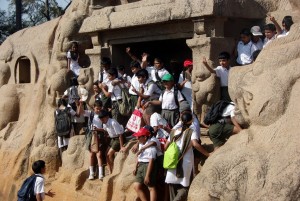
Till some decades ago parts of the temple were under sand. The sea is an ever-present danger. A semi-circular groyne wall has been built to the east. But what is notable is the fact that the temple has survived all these centuries. Built by Narasimha Varman II Rajasimha, the maker of the Kailasanatha temple in Kanchipuram in the 8th century, this is one of the earliest structural temples in Tamil Nadu.
Temple Of Sthalasayana Perumal
Immediately to the north of the bigger hill there is the temple of Sthalasayana Perumal, much enlarged in Vijayanagar times. By the very margin of the sea, with the waves often flowing at its foot, there is a magnificent fane with three shrines in an axial line, called the “Shore Temple”.
To the west of the five Rathas there are three more rathas, two side by side. About 600 m north of Mahabalipuram, along the coast, is Saluvankuppam, where there are magnificent excavated temples and, near it, a rock Mandapa with tiger heads along its periphery, called the “Tigers Cave”. Between Saluvankuppam and Mahabalipuram, less than 200m from the sea, stands another structural temple, the Mukunda Nayanar.
Each and every one of these monuments of different types, structural temple, excavated temple “cut out” temple, “open air bas relief”, not to mention sculptures and Mandapas to be found here and there, is important and interesting. The Shore temple, the celebrated “open air bas relief” called “Arjuna’s Penance”, the Mahishamardhani and the Adivaraha “Cave” temples and the Five Rathas are the especial rewards of the visitor. All the monuments are Pallava except that the original Sthalasayana Perumal temple was expanded in Vijayanagar times. To the Chola days belongs a Mandapa at the entrance to the township.
The Depictions Of Arjuna’s Penance
There have been strong differences of opinion among eminent scholars on what this scene depicts. An old view was that it represents Bhagiratha’s penance. But the opinion that currently holds the field is that it depicts Arjuna’s Penance. This “Mahabharatha” incident, also represented in both mural and relief in Lepakshi and a number of other sites, relates to Arjuna’s obtaining a weapon to use in the impending war against the Kauravas.
Bharavi, the Sanskrit dramatist, who, it is believed, was living in Kanchipuram in the seventh century, when this masterpiece was made, has made it his theme in his “Kiratarjuniyam”. The Pallava court in that century was a nest of singing birds. It is highly probable that it is this scene, which is depicted here. The main scene of action is on the southern face. Here an ascetic is performing severe penance, standing on one leg. Near him is Lord Shiva, with His attendants. Immediately below them there is a small shrine with a relief of Lord Vishnu inside. By its side are many seated sages in meditation.
The fissure indicates a river. This is clear from a fact and a suggestion. The fact, also strengthened by the presence of water serpents, is the depiction at the edge of the southern surface of some persons performing the rite of “Sandhya vandhana” by the river. The suggestion is that, in Pallava days, actual water flowed down the cleavage from the hill behind, where there are survivals of what would be called a water tank. The notion is similar to what is found in the Isurumuniya in Anuradhapura, the ancient capital of Sri Lanka.
On the northern face are some huge elephants, among the very best of their kind in the whole range of Indian sculptures. There is, besides, the hypocritical cat which, pretending to perform penance, draws to it a number of unfortunate unsuspecting rats. This is a touch of humour not very common in Indian art. There are, besides, the Lion, the Tiger, the Boar. In the upper part off the surface there are rows of semi-divine beings effortlessly flying, all towards the fissure. Close by is placed an engaging composition of a monkey picking out lice from the head of another. It was brought here from near the Mukunda Nayanar temple.
A little distance to the south there is an unfinished attempt at the depiction of the very same scene on another boulder. Probably the maker of the first bas-relief initially tried his hand here.
There is a third bas-relief, this time depicting Sri Krishna protecting the good people of Brindavan from Indra’s wrath by interposing a mountain. This is a fine pastoral scene, which visitors to Mahabalipuram in the early centuries would have readily understood. Strangely enough, there are a few small sphinxes and gryphons at the edges of the huge composition. A Mandapa was built in Vijayanagar times in front of what originally was an open-air bas-relief.
Arjuna’s Penance – An Open Air Bas Relief
If a temple by the sea and, at times, in the sea is a tour de force, the “open air bas relief” is even more so. In Mahabalipuram alone of all innumerable sites of monuments in India sculptor was impelled to choose a large cliff face on which to make his carvings. What is more, he chose a scene from the “Mahabharatha” (also spelt as Mahabharata), which a great Sanskrit dramatist, probably then living in Kanchipuram, had popularised.
This surface, 29m by 13m, consists of two large boulders with a fissure in between. In the cleavage there are a serpent god and a serpent goddess in the act of worship. Covering the surface on the boulders on either side of them there are nearly one hundred figures of Gods, sages semi-divine beings, huge elephants and a few other animals.
The Five Rathas – The Dharmaraja, The Bhima, The Arjuna, The Draupadi and The Sahadeva
The Five Rathas, about 200 m south of the main hill, were fashioned out of a smaller hill sloping down from the south. From the largest part was made the biggest of the five rathas, the Dharmaraja. Then followed onwards north, in the descending order of height, the Bhima, the Arjuna and the Draupadi.
A little to the west of Draupadi there was a comparatively large rock and out of it the Sahadeva Ratha was made. Immediately in front of the Draupadi again two smaller rocks were sculptured into an elephant and a lion. Behind the Draupadi and the Arjuna, which stand on a common base, there is a Nandi.
Not Exactly Temple Chariots!
These rathas (an irregular expression, for they are really Vimanas, and not temple chariots, as the word means) perpetuate the forms of the temple in use when they used to be made of perishable materials. A Pallava who must have been something of an art critic or art historian decided that these styles should be preserved in eternal rock. Outside Mahabalipuram except in Kazhugumalai (in Tirunelveli district), there is nothing like these rathas anywhere in India.
There are four rathas elsewhere in Mahabalipuram so that there are nine in all. Among themselves they represent four main styles: the apsidal, the barrel vaulted, the domical and the so-called “hut”. The third was to dominate the future, with some modifications. The first two are comparatively rare and the last very much so.
The rathas with the domical sikhara are the Dharmaraja, the largest of them all; the Arjuna, a smaller version of the first, the Pidari and the two Valayankuttai, these three located elsewhere in Mahabalipuram. The Bhima Ratha and Ganesa Ratha, which is near the larger hill, are barrel vaulted, the Sahadeva is apsidal, and the Draupadi is “hut shaped”.
There are some superb sculptures on the Dharmaraja and the Arjuna. The former contains splendid divine and secular portraits, with labels beside some of them. The later are certainly kings, but it is difficult to identify them. There are some lovely royal couples on the Arjuna. Again, it is impossible to say who they are. Nevertheless, these sculptures show how beautifully delicate and sensitive Pallava sculpture is, making it one of the great schools of Indian art.
The lion, Goddess Durga’s mount, stands right in front of Her shrine, here called the “Draupadi”. Just alongside the apsidal Sahadeva Ratha stands the elephant, also apsidal in shape. Such touches are frequent in Mahabalipuram. It is very probable that there was a school of sculpture here in ancient days. For, probationary and incomplete sculptural and architectural efforts are to be seen at every turn. An important point is that not a single monument in Mahabalipuram is quite complete.
Mahishamardhani and the Adivaraha Mandapas
Of the many excavated rock temples in Mahabalipuram anomalously called “Mandapas”, two of the best are the Mahishamardhani and the Adivaraha. The former contains on walls facing each other two of the most superb sculptural reliefs known to Indian art, both connected with each other in their common scriptural source. The latter Mandapa has two groups of royal sculptures, also facing each other. Besides, it is the only temple in Mahabalipuram apart from the Sthalasayana Perumal, where worship continues today, but fitfully.
The Mahishamardhini temple has been excavated in a rock on the eastern side of the top of the hill. Right above it there is a structural temple, one of four of a lighthouse for decades until a new lighthouse was erected close by. Near the Mahishamardhani temple there is a smaller rock where an unfinished attempt at excavating a fane has been made.
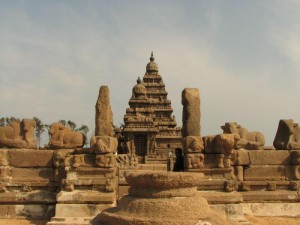
There are three shrines in the Mahishamardhani Mandapa. A small Mandapa projects forward from the central shrine. On the northern and southern walls of the Ardhamandapa there are the great sculptural reliefs of Goddess Durga fighting the demon and of Lord Vishnu in His cosmic sleep. The incidents are from two consecutive cantos of the “Devi Mahatmyam”. In the one relief the energy with which the young Goddess goes forth to war with the buffalo headed demon is in magnificent contrast with the cosmic sleep of Lord Vishnu on His serpent couch.
The royal groups in the Adivaraha temple are, in one, of a seated king with two queens flanking him and, in the other, of a standing king with two consorts standing by him. There are many opinions but it is generally thought that the seated monarch is Simhavishnu (574-600) and the standing one his son and successor, Mahendra I (600-630). There are, besides, reliefs of many divinities.
Fair & Festival at Mahabalipuram
Dance Festival at Mahabalipuram The internationally acclaimed and globally renowned “Mahabalipuram Dance Festival” is organised by the Department of Tourism, Government of Tamil Nadu every year in Mahabalipuram – the renowned and ancient 7th century centre for Pallava culture and arts.
The Dance festival starts on the 25th of December every year and is conducted on all Saturdays and Government holidays, upto February first week. Dancers and musicians of repute from India and abroad thrill the crowds every year. Folk dances of India are an added attraction.
Sit before an open-air ‘stage’ created 13 centuries ago, the incredible monolithic rock sculptures of the Pallavas, next to the sea in this ancient city of Mahabalipuram. Lovers of dance will be treated to a very unique and unforgettably aesthet ic event: Bharathanatyam, Kuchipudi, Kathakali and Odissi, presented by the very best exponents of the art besides folk dances.

